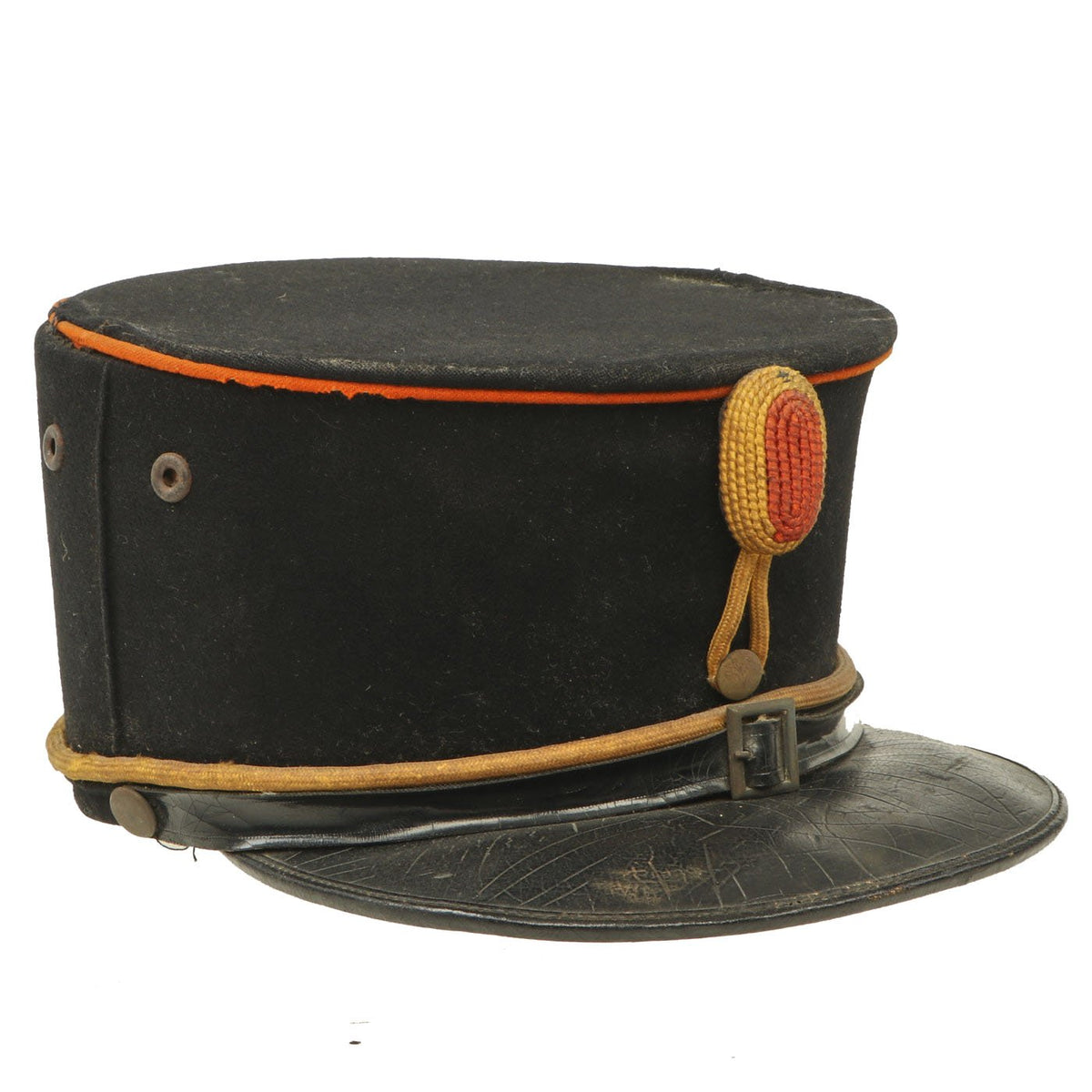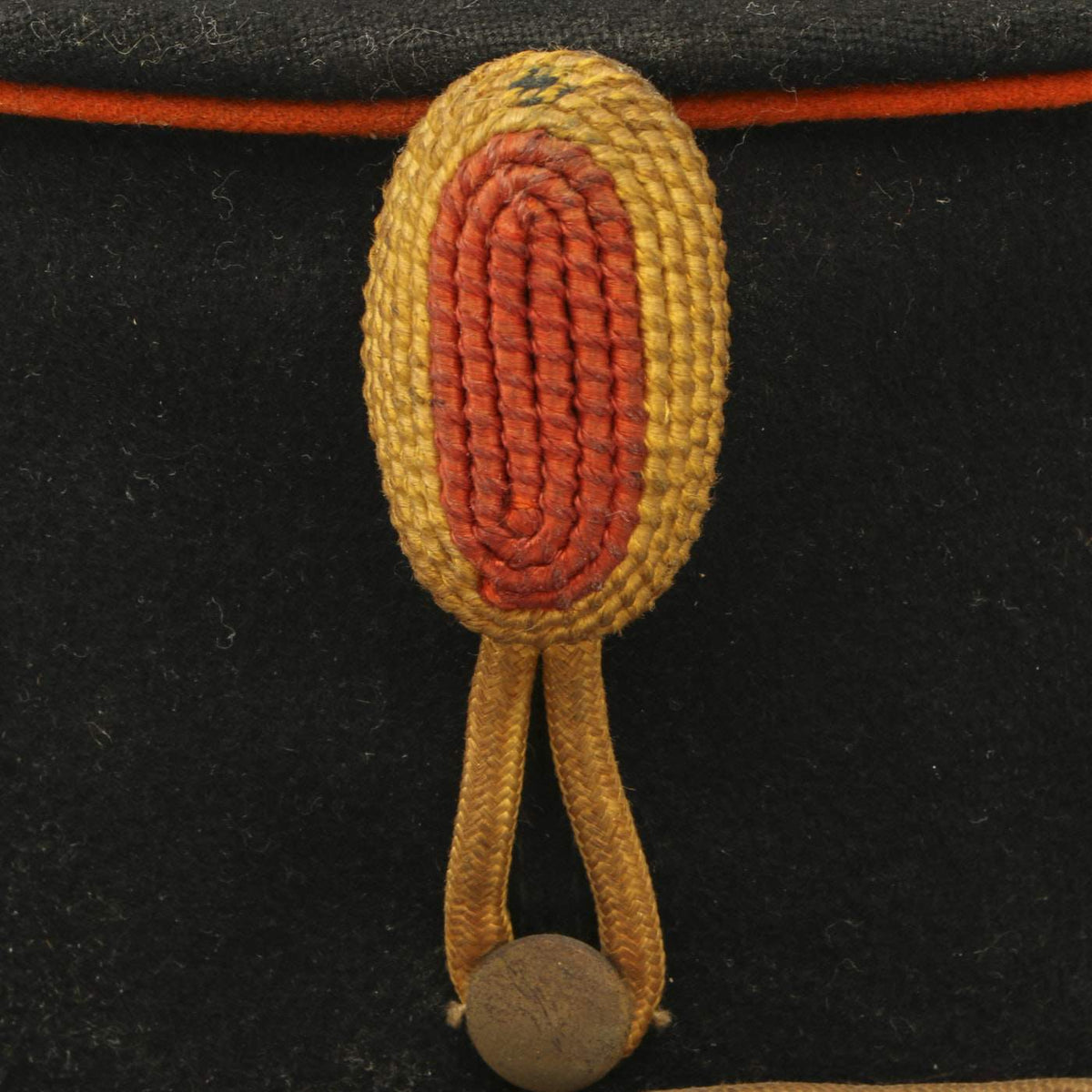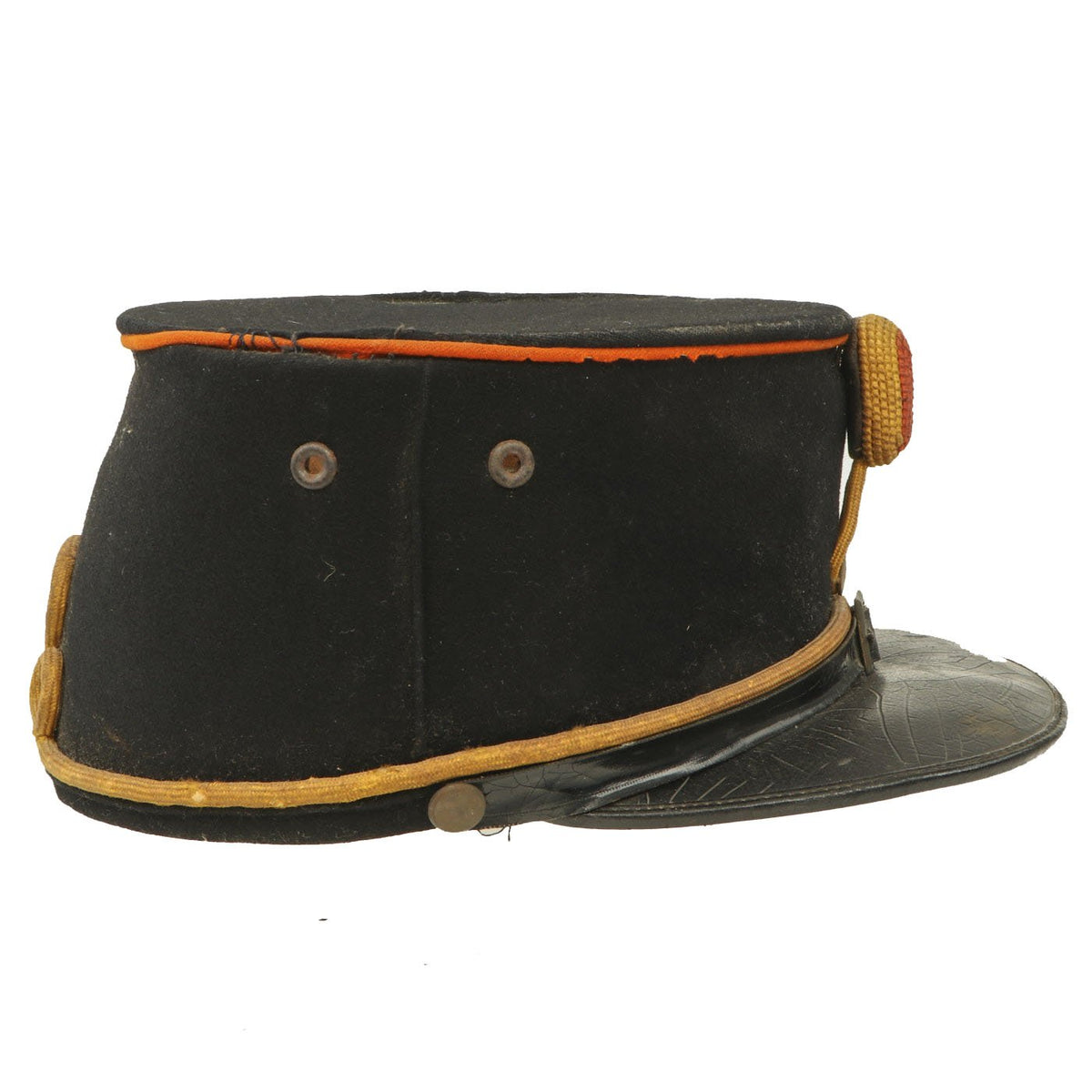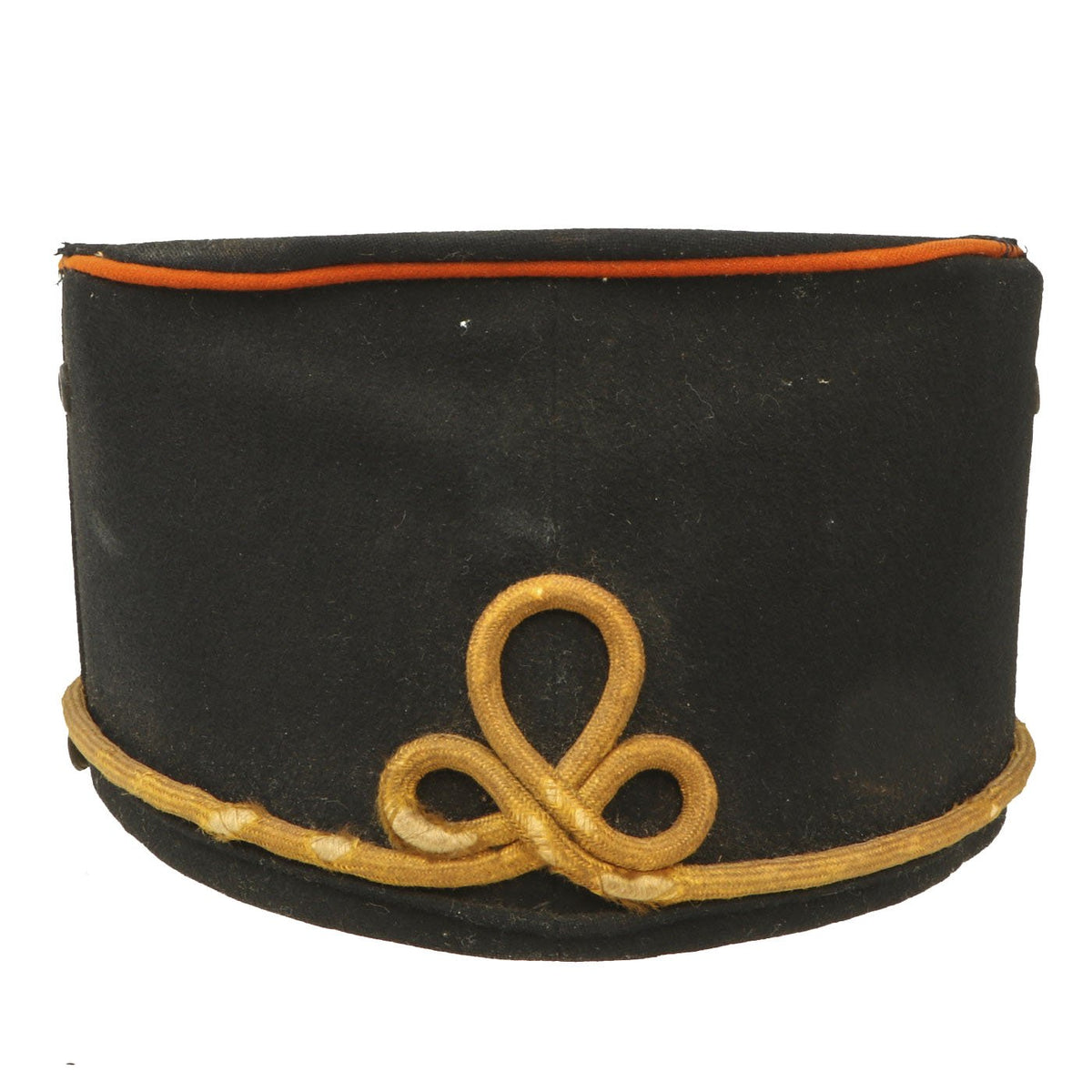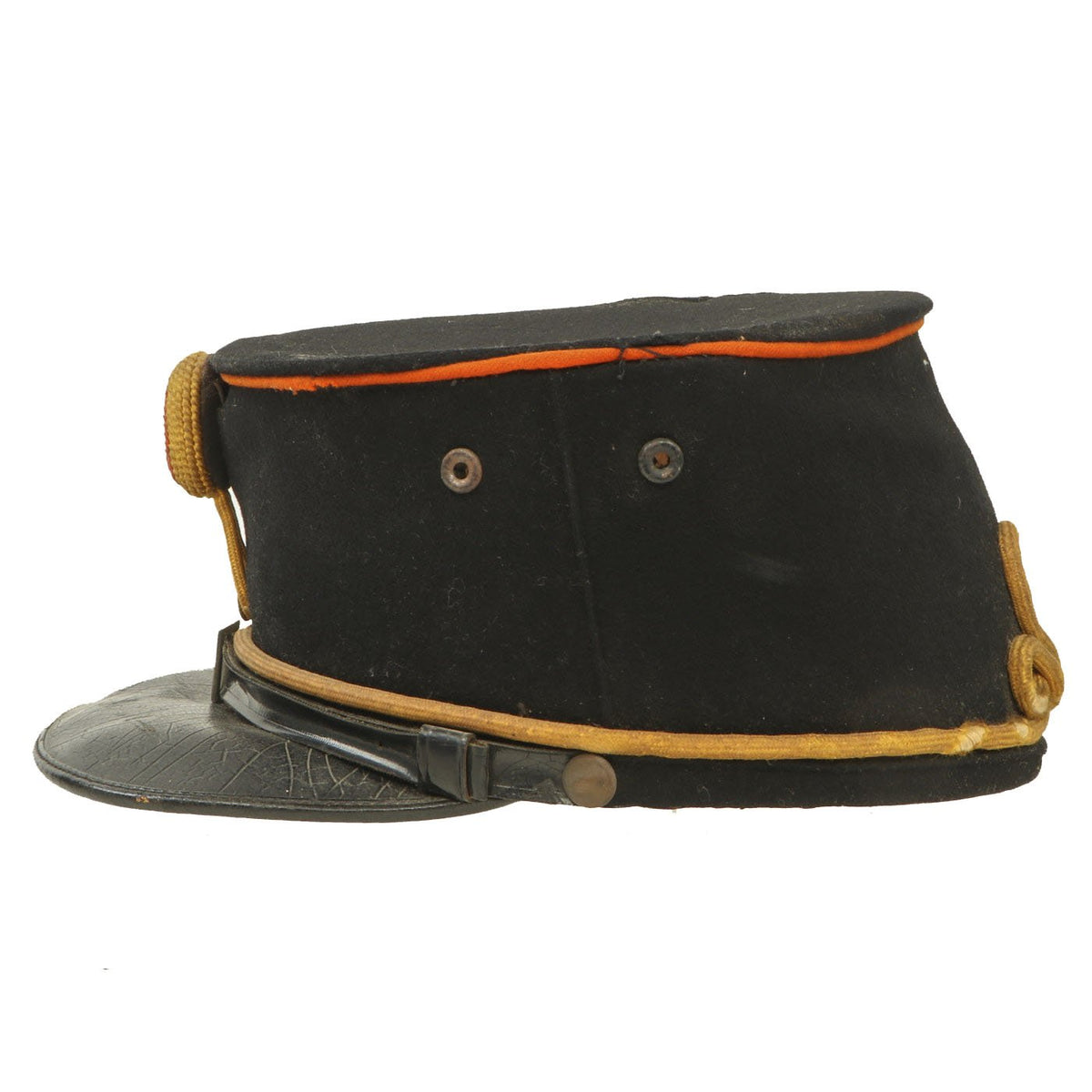Original Dutch Netherlands Pre-WWI KNIL Royal Dutch Indian Army Officer Kepi Original Items
$ 195,00 $ 78,00
Original Item: Only one Available. Here we have a very nice example of an early 20th century Dutch Kepie (Kepi), as issued to the Koninklijke Nederlandsch-Indisch Leger (Royal Netherlands East Indies Army), usually abbreviated as KNIL. This area, usually referred to as the “Dutch East Indies”, is today known as the country of Indonesia.
Like most European Colonial holdings, military forces were raised from the local population for defense for both external and internal threats. Soldiers in the KNIL were issued these black kepis with leather visors, which were somewhat shorter than the high top versions used in Europe.
The kepi is in very good condition, and we believe is the manschappen (enlisted man) version. It has a black felt exterior, which is well retained, with just a bit of wear and moth damage around the edges. The crown of the cap has orange piping, and there is a gold cord around the kepi which makes a cloverleaf shape in the back. The front has the standard yellow and orange Dutch cockade, held in place by a cord running to a button below. The black patent faux leather chin strap is in good condition, though it definitely has shrunk and curled a bit.
The interior of the cap definitely shows staining and wear, and the entire sweatband is unfortunately missing, most likely rotted away due to the humid climate. There are some numbers on the top of the kepi, most likely indicating who it was issued to. There are several crossed out numbers, so this kepi looks to have been issued to several different people.
Size is approximately 56 cm (US 7). Early 20th century Dutch KNIL caps such as these, are somewhat hard to find, and very collectible.
The Netherlands remained neutral during World War I. This stance arose partly from a strict policy of neutrality in international affairs that started in 1830 with the secession of Belgium from the north. Dutch neutrality was not guaranteed by the major powers in Europe, nor was it a part of the Dutch constitution. The country’s neutrality was based on the belief that its strategic position between the German Empire, German-occupied Belgium, and the British guaranteed its safety.
The Royal Netherlands Army was mobilized throughout the conflict, as belligerents regularly attempted to intimidate the Netherlands and place demands on it. In addition to providing a credible deterrence, the army had to house refugees, guard internment camps for captured soldiers, and prevent smuggling. The government also restricted the free movement of people, monitored spies, and took other wartime measures.
Fast Shipping with Professional Packaging
Thanks to our longstanding association with UPS FedEx DHL, and other major international carriers, we are able to provide a range of shipping options. Our warehouse staff is expertly trained and will wrap your products according to our exact and precise specifications. Prior to shipping, your goods will be thoroughly examined and securely secured. We ship to thousands clients each day across multiple countries. This shows how we're dedicated to be the largest retailer on the internet. Warehouses and distribution centres can be located throughout Europe as well as the USA.
Note: Orders with more than one item will be assigned a processing date depending on the item.
Before shipping before shipping, we'll conduct a thorough inspection of the items you have ordered. Today, the majority of orders will be delivered within 48 hours. The delivery time will be between 3-7 days.
Returns
The stock is dynamic and we cannot completely manage it because multiple stakeholders are involved, including our factory and warehouse. So the actual stock may alter at any time. It's possible that you may not receive your order once the order has been made.
Our policy is valid for a period of 30 days. If you don't receive the product within 30 days, we are not able to issue a refund or an exchange.
You can only return an item if it is unused and in the same state as the day you received it. You must have the item in its original packaging.
Related products
Uncategorized
Uncategorized
Uncategorized
Armored Burgonet Helmet & Polearm from Scottish Castle Leith Hall Circa 1700 Original Items
Uncategorized
Uncategorized
Uncategorized
Uncategorized
Uncategorized
Uncategorized
Uncategorized
Uncategorized
Armoured Fighting Vehicles of the World: AFVs of World War One (Hardcover Book) New Made Items
Uncategorized
Uncategorized
Uncategorized
Uncategorized
Uncategorized
Uncategorized

